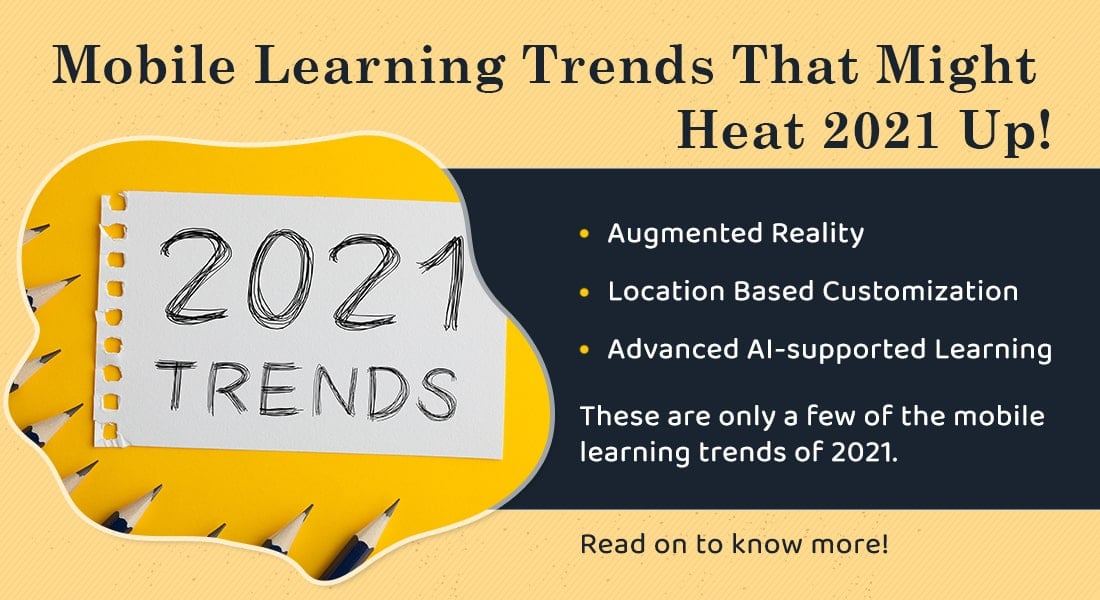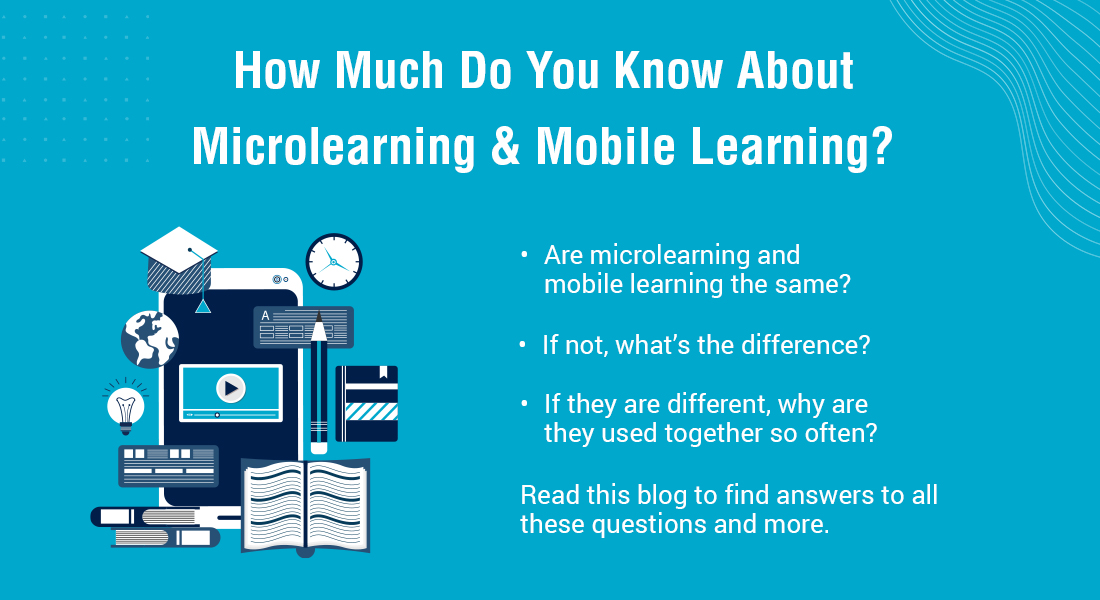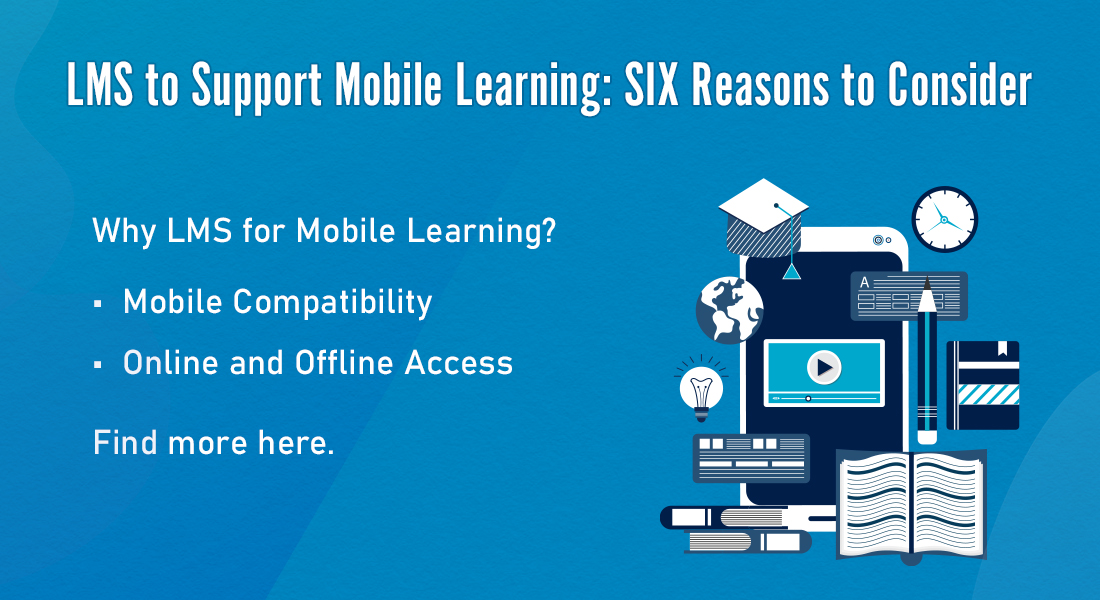5 Reasons Why Mobile Learning and Microlearning Combo is Essential for Modern Workforce

According to a Deloitte report, the modern workforce checks their mobile phones with round-the-clock regularity. There is so much to do with these smartphones, it’s natural for people to stay invested in them. Smartphones have become the device of choice for shopping, entertainment, social media, training and development, and eLearning. Mobile learning is on the rise and doesn’t seem to turn around any time soon. But, ever wondered what brought mobile learning to such a buzz?
Are You Planning to Combine Microlearning and Mobile Learning for Your Training Sessions?
Here are 5 reasons why you should go for it:
- Increases Learner Attention and Information Retention
- Improves Learner Engagement
- Saves Time and Money
- Balances Technical Mismanagements
- Adapts Well With Other ID (Instructional Design) Strategies
Read on to find out how microlearning and mobile learning is a powerful duo.
Mobile learning has gained popularity due to a lot of reasons, one of the primary reasons is the integration of microlearning. If you think about it, people are so invested in mobile phones, but will they watch hour-long videos or read long paragraphs on a daily basis on their mobile phones, probably not. Now, microlearning is a format where a subject or topic is designed into bite-sized fragments. The combined narrative of mobile learning and microlearning, where small sections of information are served separately on mobile devices has improved the overall retention, engagement, and performance of the corporate workforce. I have discussed 5 reasons why this combination works great for the modern workforce.
5 Reasons Why Mobile Learning and Microlearning Combo is Useful for Modern Workforce
1. Increases Learner Attention and Information Retention
Modern workforces have a relatively less attention span, which means, that if any sort of training session goes on for long enough, learners have a higher chance of failing to stay attentive throughout the course. If a learner loses attention mid-course, they might not even retain the information they managed to gain. Course completion rates started to increase once microlearning and mobile learning was combined to serve the purpose.
For example, mandatory organizational compliance training. These compliance training sessions are not that engaging, but employees are required to retain the information anyways, if the sessions are small and crisp while the learners can access them on the go, would eventually increase the completion rate of these non-engaging topics.
Access this free webinar recording to understand how mobile learning supports different trainings.
2. Improves Learner Engagement
Modern learners are engaged more in crisp and straightforward content and microlearning does exactly that. Providing those crisp chunks of information on mobile devices is just vanilla icing on the cake. Microlearning also promotes continuous learning among learners, if the content is short and accessible on mobiles, it is more likely to keep them engaged rather than some long paragraphs of text all over their screen for an hour.
For example, consider a bunch of employees you need to train to use certain software or tool. Now, you can either provide them with a 100-page manual full of texts and diagrams and expect them to sit in front of their desktops to read it. Or else, you can convert the same course into small chunks and deliver it in the form of creative animations or videos that are accessible on mobiles as well. Here, the latter has a higher chance of keeping the learners engaged throughout the course.
3. Saves Time and Money
Modern workforces have a tight schedule, and they take fewer breaks as well. To keep up with their hectic schedule while not disturbing their flow of work, organizations have come up with a mix of microlearning and mobile learning to be their primary solution. If organizations overwhelm employees with training modules after their daily work hours, employees might not cope with the process, losing their engagement in both, their work, and their learning.
To avoid this, microlearning modules are provided to employees that they need to complete within their work hours, in their free time. These microlearning modules are totally accessible on their mobile phones, so it adds up to the flexibility of these modules. If they couldn’t get any sort of free time during their work hours, they can still access the short modules when they reach home, all because they are accessible on mobiles.
4. Balances Technical Mismanagements
Practically, mobile phones have access to weaker internet connections, considering the fact that wi-fi isn’t available everywhere and their battery life is short as well. When you shift toward a mobile learning strategy, these limitations are not meant to be ignored. Microlearning content is short and crisp, which directly relates to the limitations of mobile learning and possibly solves them as well. It requires less bandwidth to access microlearning content, and due to its short length, it doesn’t require your mobile battery to be drained for a longer time. Hence, microlearning and mobile learning complement each other in terms of practical technicalities as well.
5. Adapts Well with Other ID (Instructional Design) Strategies
More than any other strategy, microlearning is adapted the best for mobile learning. But their combination allows other strategies to uncover their potential as well, blended learning and gamification can be great examples. Due to the acceptance of BYOD(Bring your own device) policies, blended learning sessions can benefit directly when they are mixed with microlearning modules and those modules are accessible on mobiles or laptops, due to the responsive nature of microlearning modules. Gamification is a different strategy on its own, but on a general basis, what’s better than learning through games? Learning through games on the go, isn’t it? Thus, mobile learning and microlearning serve as a powerful duo even when they are integrated along with other ID strategies.
Wrapping It Up!
Integrating microlearning and mobile learning together can solve a lot of problems for the modern workforce, whether it’s regarding their engagement, knowledge retention, or technical barriers. Before combining microlearning with mobile learning, you need to make sure you have clarity on whether microlearning is suitable for your corporate training programs. This free eBook can help you to understand where microlearning fits in your learning strategy.




